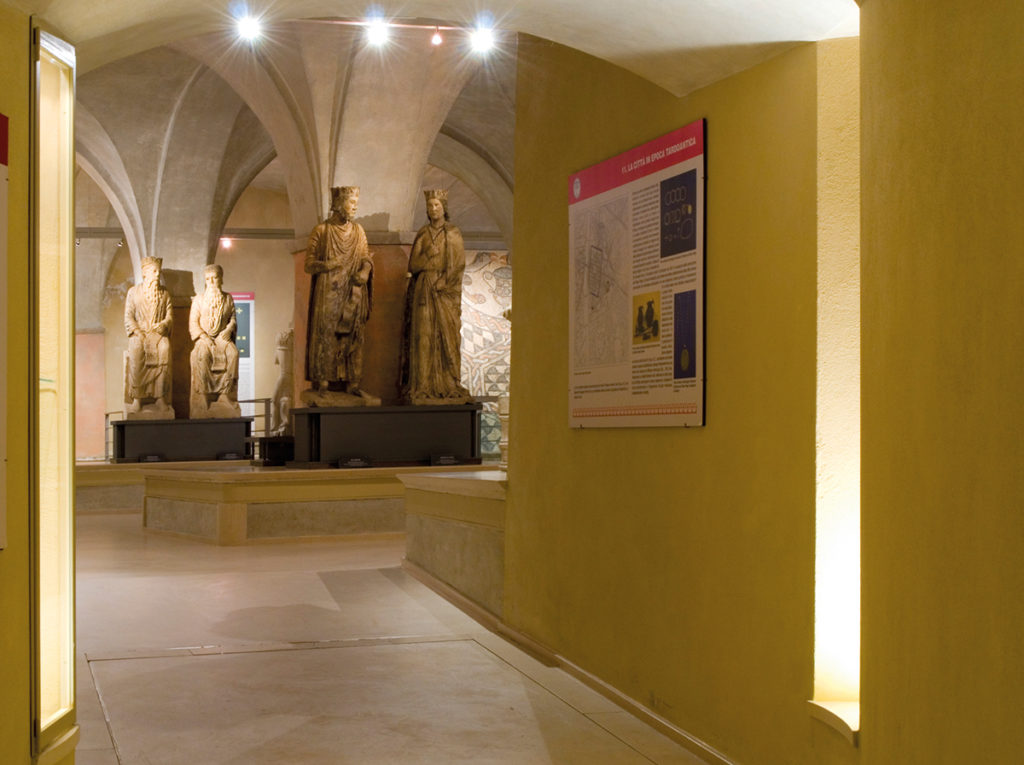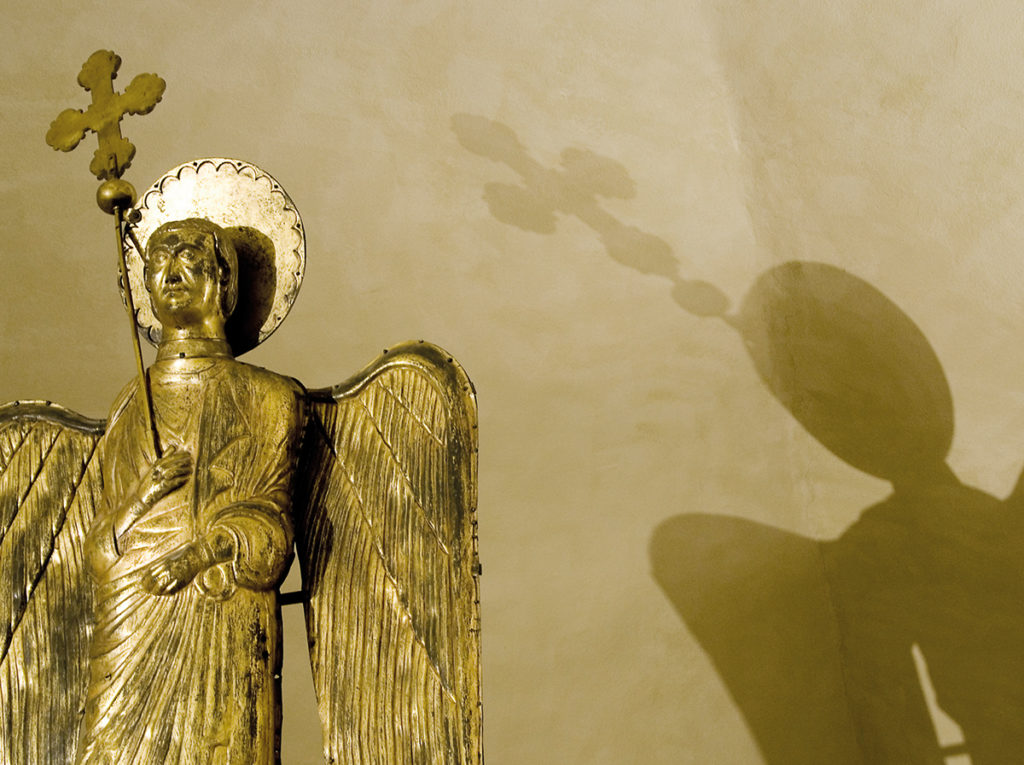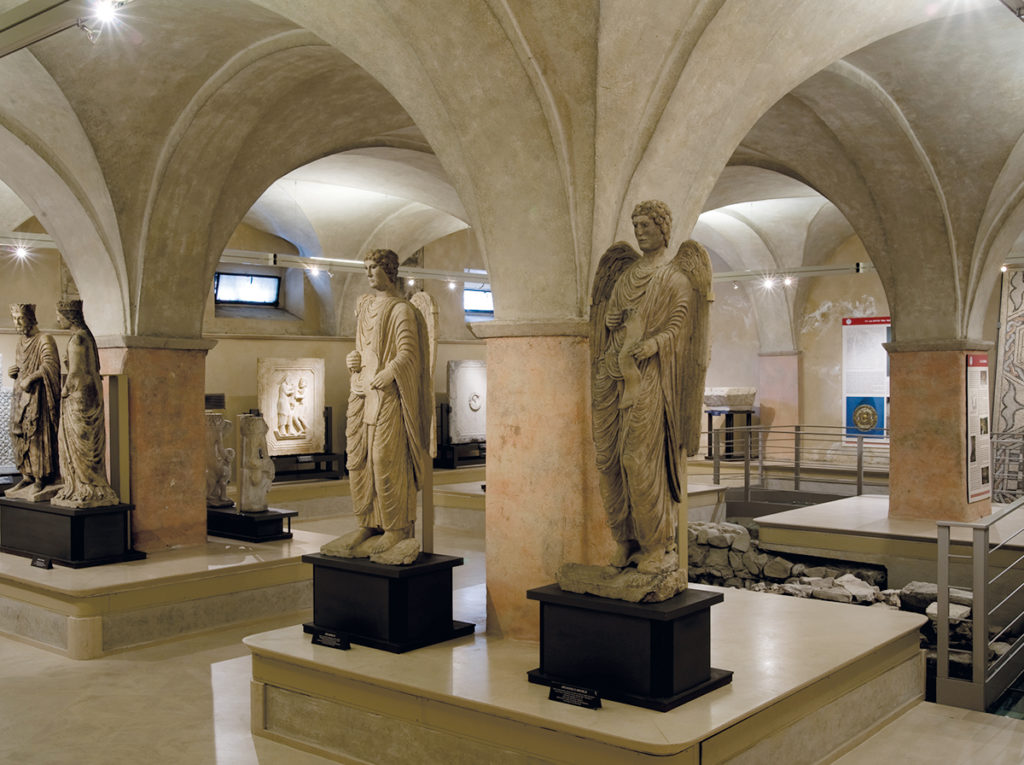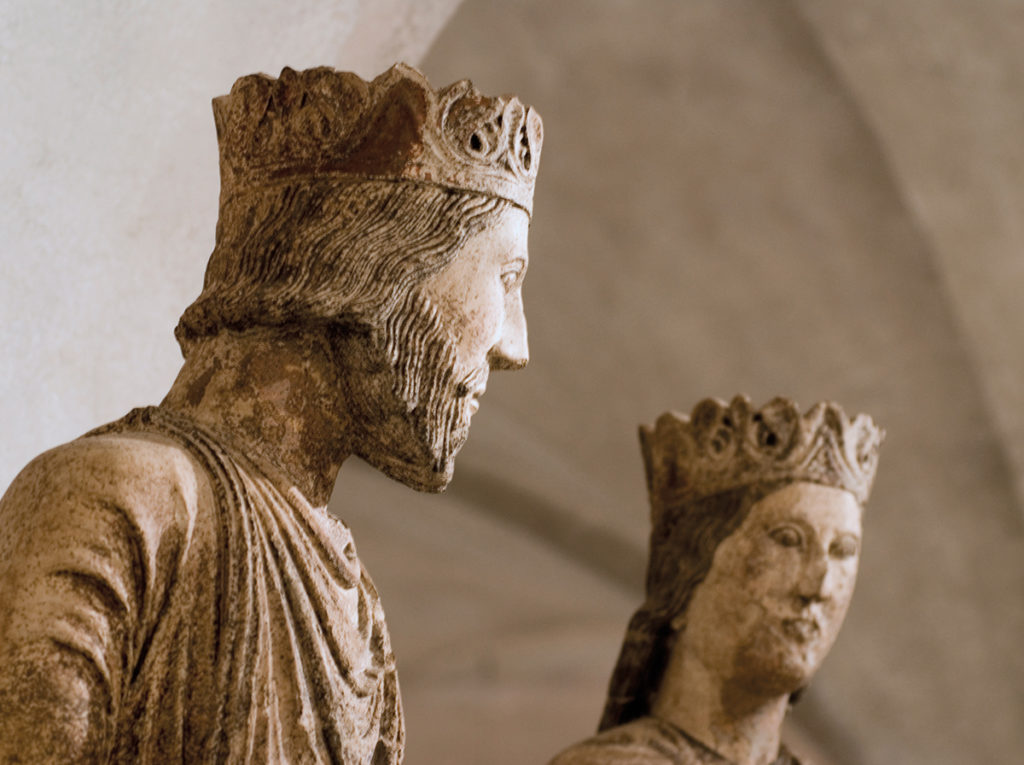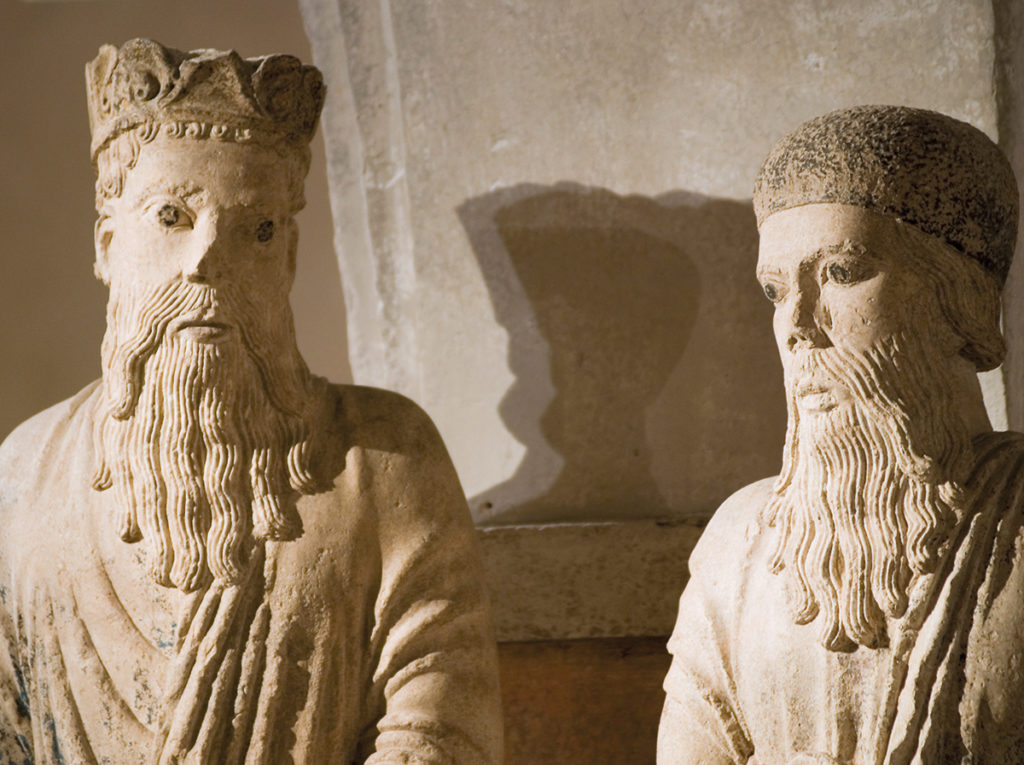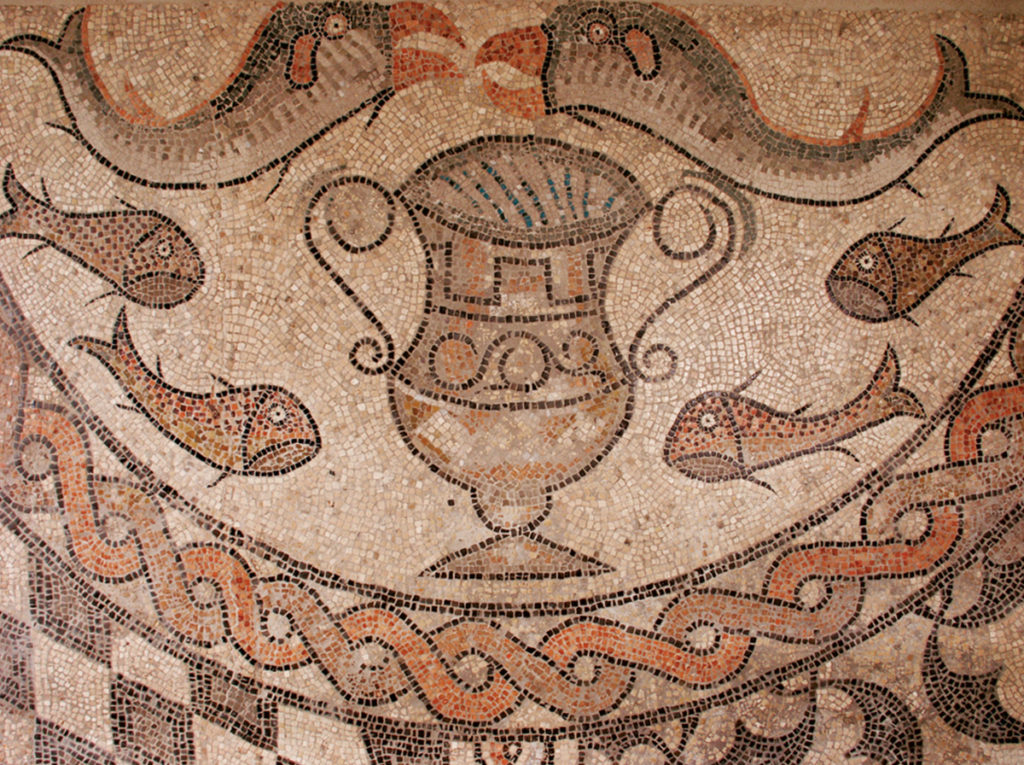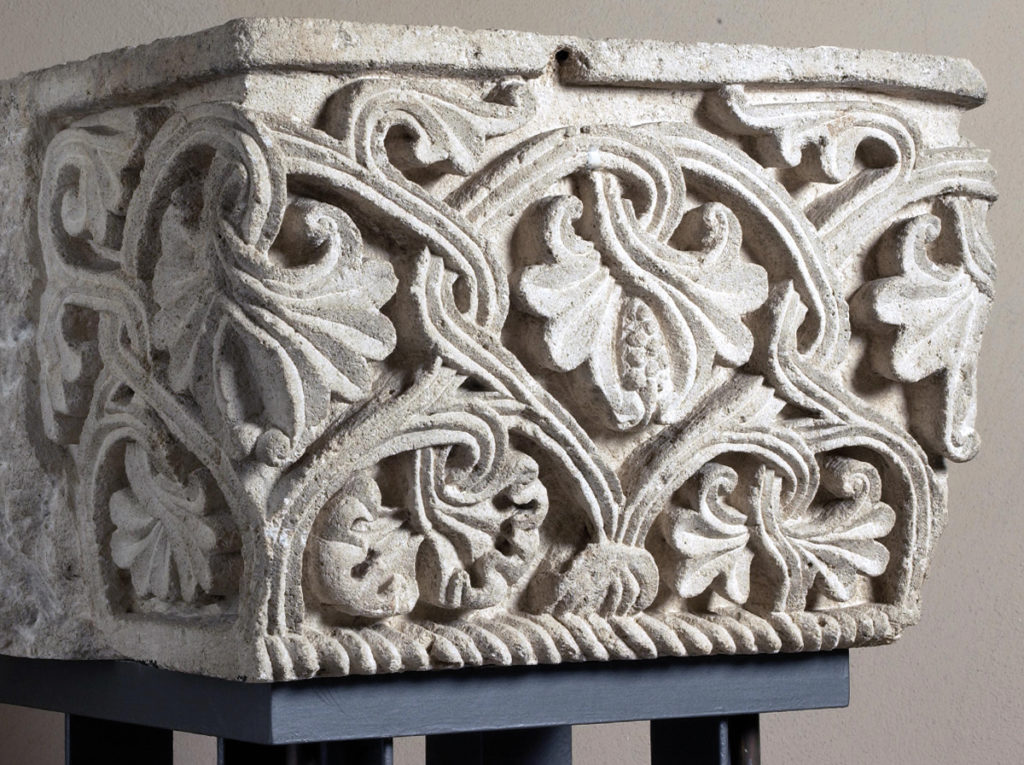The Diocesan Museum of Parma is located in the Bishop’s Palace, in Piazza Duomo. It occupies part of the under-ground level of the Palace and has its entrance in Vicolo del Vescovado.
Museum Director: Don Alfredo Bianchi
The exhibition
The museum exhibition involves a chronological itinerary based of the history of the spread of Christianity in the town, starting with Roman times and continuing with the early medieval and medieval sections.
The artifacts on display are accompanied by panels that explain their meaning within the context of origin, with particular focus on the construction of the Bishop’s Palace, Cathedral and Baptistery. Along the itinerary, visitors can see a stretch of the late antique Roman walls dating to the end of the 3rd century AD. The exhibits include early Christian artifacts, coins, Roman stuccoes and early Medieval ceramics.
The Angiol D’Or
In Parma they call him “L’Angiolen dal Dom” (“the cathedral’s angel”) and the one on exhibit at the museum is the original statue. Until the last century it stood on top of the Cathedral bell tower, where today it has been replaced by a copy.
It is 1.42m high and it consists of two hollow sections cast in copper. It represents the Archangel Raphael standing with open wings, dressed in a draped robe: in his hand he holds a large cross and a golden halo encircles his head. We do not know the name of its creator, but the artist surely was acquainted with the work of the great Antelami and had admired his many angels, among which the two statues of Gabriel and Michael on the northern side of the Baptistery.
The Archangels Michael and Gabriel
Antelami’s statues of the Archangels Michael and Gabriel used to adorn the northern portal of the Baptistery overlooking Piazza Duomo.
The two Archangels used to be located in the two niches above the portal of the Virgin and were part of the great architectural project of Benedetto Antelami for the Baptistery of Parma. The sculpture of the Archangel Michael is a very rare example of re-use: except for the head and the feet it is thought to have been originally a statue from Roman Parma. The Archangel Gabriel is carved out of the same stone, an organogenic limestone from Vicenza which was also used for other statues in the Baptistery.
King Solomon and the Queen of Sheba
These two statues were also located in the northern portal of the Baptistery and are the work of the great sculptor Benedetto Antelami.
The two statues are sculpted almost in the round and still retain traces of polychromy. King Solomon, facing left, looks at his guest and, his mouth slightly open, seems to be talking to her, while the Queen of Sheba, dressed in an elegant draped robe, her crowned head slightly tilted, looks like she is turning to listen to Solomon. These two very elegant and charming figures remind us with their bearing and clothing of oriental monarchs and French aristocratic ladies, raising more questions about the life, travels and extraordinary figure of Benedetto Antelami.
The two prophets
Together with the two Archangels, the Queen of Sheba and King Solomon, these two statues completed the group by Antelami formerly located in the northern entrance of the Baptistery.
The two prophets were located in the niche left of the portal and they represent David and Nathan, or perhaps Abuc (due to the loss of one letter, the interpretation of the inscription is not certain). The very elegant and charming figures contain references to French sculpture, suggesting Antelami had an extensive artistic education.
The mosaic of the Diocesan Museum
Brought to light in 1955 in the southern area of Piazza Duomo, this mosaic dates to approximately the 6th century.
The portion of it exhibited at the Museum has a hexagonal honeycomb pattern in whose centre is a round emblem containing a vase (“cantharos”), two pairs of fish and a pair of dolphins. Given the inscription of the names of the people gifting the mosaic, it is thought that it may have been located in a Christian worship building, perhaps the early Christian basilica that preceded the current cathedral. The “cantharos”, depicted in the centre of the mosaic, today is the symbol of the Diocesan Museum of Parma.
The Capitals of the early medieval Cathedral
A reliable historical reconstruction suggests that these capitals were part of the early medieval Cathedral, built after the early Christian Basilica and thought to have been destroyed by a terrible fire in the 10th century.
These artifacts are therefore part of the great building renovation that involved the area and buildings of Piazza Duomo at the time: this seems to be confirmed by the imposing wall of pebbles, brick pieces and mortar recently discovered while repaving the church square.
